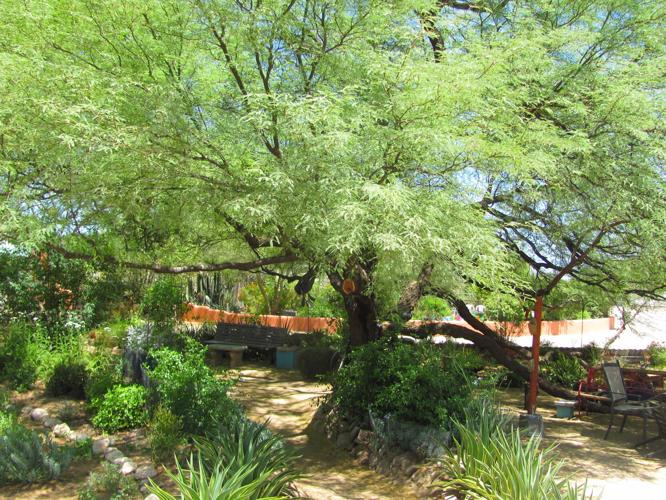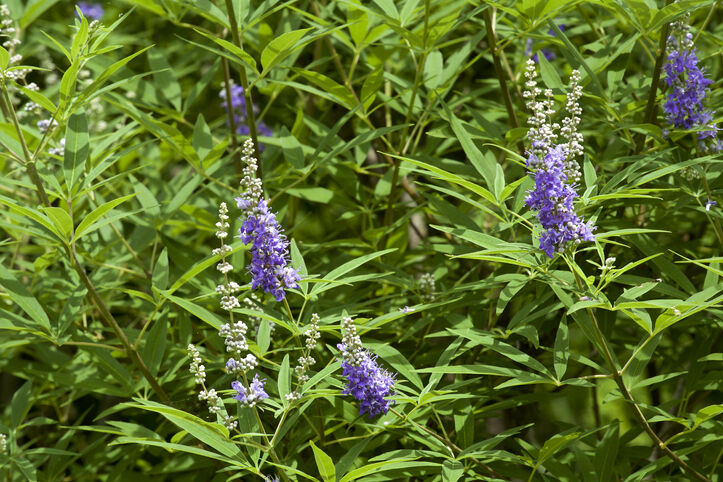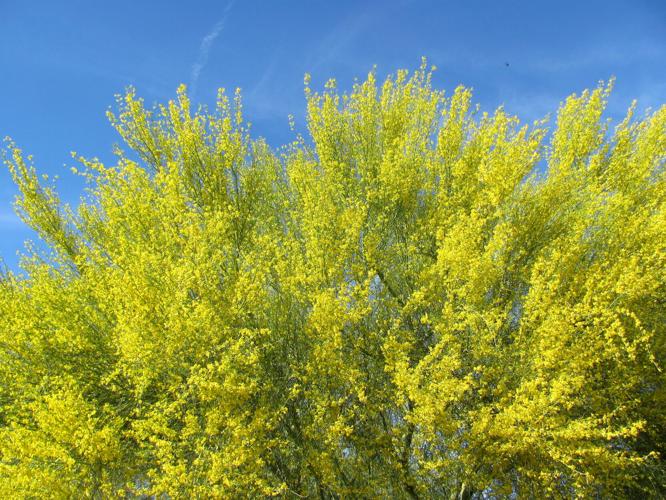We live in impatient times, and when we decide we want a tree in our yard we want it to grow quickly so we can enjoy its shade. There are quite a few local trees that grow fast, as well as some that are non-native. However, fast-growing trees come with some caveats.
First, while many of our native trees grow fast if watered a lot, it may not be the wisest course to take. Watering a tree too much can lead to the crown developing faster than the roots, and the wood being weaker than it should be. Both can spell problems once the tree is larger and the branches are heavier. Trees that have been over-watered can suffer wind damage and break off branches more easily. They can even be uprooted by winds and storms.
There’s also the question of water use. You may be willing to give that little tree extra water for a couple of years, but how about when it’s 30 feet tall? It’s best if the tree you plant gets used to our climate, so it can adapt and survive as it grows to full size.
I’ve put together a short list of some fast-growing trees that do well in our climate. There are some varieties in size, so hopefully you can find a tree for your space. Whichever one you choose for your yard, make sure you follow watering guidelines for trees in Tucson.

The chaste tree (Vitex agnus-castus) has lovely green foliage and attractive purple flowers. It sheds its leaves for winter.
Mesquite (Prosopis spp): We have three native species of mesquite in our area; velvet mesquite (P. velutina), screwbean mesquite (P. pubescens) and honey mesquite (P. glandulosa). The screwbean mesquite is slower growing and not as tall as the other species. Velvet and honey mesquite can grow up to 25-30 feet tall. They have a spreading shape which provides great shade, are winter-deciduous, and are quite thorny. They thrive in our desert and will not need supplemental water once established.
Desert willow (Chilopsis linearis): One of my favorite trees, desert willows are native to our riparian areas. They may need some supplemental water in hot, reflected sunny urban areas. Horticultural varieties from local growers provide a number of beautiful bloom colors, including light violet, hot pink and deep pink-red. They’re great wildlife trees and have no thorns. They are deciduous in the winter.
Arizona ash (Fraxinus velutina): This is another one of our native riparian trees. It will look best with some supplemental watering. It grows to 50 feet in height, so it will need lots of room. Don’t stake it if you plant one, and don’t trim the lower branches as the bark can become sunburned. It’s also thornless.

A palo verde in bloom against a blue-sky backdrop.
Blue palo verde (Parkinsonia florida): This large palo verde tree can grow to 30 feet tall and wide. It likes our hot summers and has gorgeous yellow flowers in the spring. Birds love it for habitat and nesting. It’s extremely drought-tolerant and can take reflected heat, but don’t forget to leave it plenty of room to grow.
Shoestring acacia (Acacia stenophylla): This lovely upright delicate tree is native to Australia. It’s drought-tolerant and a fast grower, reaching to 30 feet. It’s evergreen and thornless, and its long graceful leaves hang like tendrils. It also has creamy puffball-like flowers through the fall and winter. Make sure you move the watering to the outer margin of the dripline so that roots grow outward to stabilize the tree.
‘Red push’ pistache (Pistacia atlantica x integerrima): This horticultural hybrid grows as a single-trunked tree and does not produce nuts. Pistache trees are originally from China. This particular tree has spectacular crimson fall leaves and is winter deciduous. During the summer it has a nice thick leaf canopy. It will need some supplemental water.
Chaste tree (Vitex agnus-castus): This tree originates in Southern Europe, and is fairly drought-tolerant. It has lovely purple flowers which smell nice and attract pollinators. It has a nice shady canopy with lush green leaves, and is deciduous in the winter. It’s not very large, growing only to 15-20 feet or so, but is a very nice small shade tree. It produces some litter, but has no thorns. It will need supplemental water.







